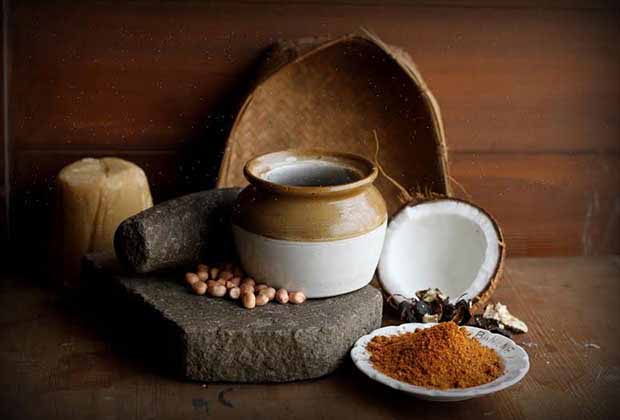Pantry essentials to get you started in a Maharashtrian kitchen
- By Saee Koranne KhandekarLoading...
- | 18 May 2015 9:10 AM GMT
 X
X
 Ingredients that define a Maharashtrian kitchen
Ingredients that define a Maharashtrian kitchen
I was raised as a Koknastha-Deshastha Brahmin and married into a Karhade family. For all the years in between, I was lucky to have eaten at homes of Maratha, CKP, Pathare-Prabhu, GSB, and other Maharashtrian friends.
And yet, no matter what kitchen I walk into, apart from a few nuanced differences, Maharashtrian kitchens, as a whole, are quite similar—predictable, even.
I remember when I first visited my husband’s maternal grandparents’ home—his ajol. I was the youngest daughter-in-law, and I knew I was being scrutinised.
It was during the Ganpati festivities, and everyone had their jobs set out for them.
I offered to make the Masale Bhaat—a spiced rice that is always part of a festive menu.
The moment I offered, I wondered if I would be able to pull it off—cooking for such a large group of people in a new kitchen as people watched me over their shoulders.
I walked into the large, bright kitchen and realised at once, that it would all be okay.
It was a traditional kitchen, much like the one in my ajol—my great grandmother’s meticulously kept kitchen, complete with its Dubhtyacha kapaat (a cabinet with mesh shutters specially crafted and positioned in dark and cool areas of the kitchen or pantry for milk and milk products; this was where pots of milk, butter, ghee, and clotted cream were stored before refrigeration arrived), beaten and pockmarked dabbas of steel for tea and sugar, and white and beige ceramic jars holding salt, tamarind, and jaggery.
I knew instantly that this kitchen would be special because of the embrace of its familiarity.
The thing is, most Maharashtrian kitchens will carry a few pantry essentials that although used differently in different regional cuisines, will form the flavour bases of every quintessentially Maharashtrian meal.
Marry one from every category with a protein (meat or otherwise), throw in a few vegetables, and you will end up with a very satisfying meal resonant with the essence of Maharashtrian food.
1. Grains: Millets such as jowar, bajra, and rice form the carbohydrate staple of the majority of Maharashtra along with wheat (a relatively more recent addition to the palate) and the coastal favourite, rice.
All of these grains are usually milled into flour and converted to Bhakris (unleavened flat breads) or eaten as porridge. Rice is also used in other forms such as beaten rice, which is eaten in at least 15 different ways!
2. Dairy: Dairy products such as our beloved Saajuktoop or homemade ghee, Kharvas (a steamed pudding made from cow’s colostrum), dahi, and Loni or freshly-churned white butter are probably one of the Marathi manus’ only indulgences, and in the olden days, the amount of milk and milk products a family could afford indicated its prosperity and marriageability!
3. Thickeners and flavour bases: Peanuts, sesame seeds, fresh and dried coconut—these are used in some or other combination all over the state for dry as well as sauce-based preparations, both vegetarian and non-vegetarian.
Apart from providing a distinct aroma and nuttiness to the dish, they also help impart textural contrast and body.
4. Acids and sweeteners: Chincha-gool or tamarind-jaggery is a commonly used combination of sour and sweet, and is used most often in the preparation of Aamti, a spiced, sweet and sour daal.
Dehydrated kokum is also a popular choice used abundantly along the coast in fish preparations and vegetarian curries alike. Kaakvi or sugarcane molasses is used in cooking and is also eaten by itself, much like maple syrup.
5. Spice mixes: Finally, what would a Maharashtrian dish be without a liberal use of a special family heirloom masala! Koli or Malwani masalas, Goda masala, Pathare Prabhu Methkut (radically different from the Maharashtrian Brahmin Metkoot), Saoji masalas, Kolhapuri Kanda-lasun masala—spice mixes change from home to home, and these make (or break) a good usal (curried sprouts), bhaji, bhaat, aamti, or sukka.
These are available under several brands on any supermarket shelf, but almost all Marathi families worth their salt will proudly make their own!
And yes, the Masale Bhaat turned out just as it should have, and I still make it once every time I visit.
Photo credit: Saee Koranne-Khandekar
When Saee is not playing harrowed mum to her three children (and sometimes, WHILE she is playing harrowed mum), she is cooking up recipes in her head or in her kitchen, and finding parallels in world cuisine.
Follow Saee on Twitter @Saeek




